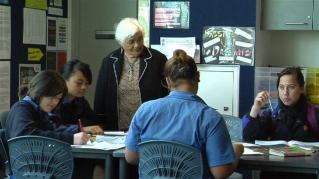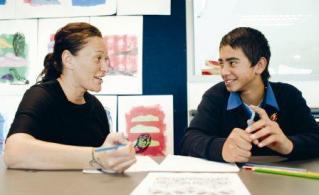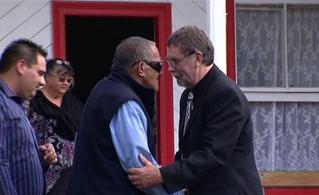Section navigation
Three schools in the Te Kauhua initiative – Hillmorton, Lincoln, and Hornby High Schools - opted to cluster together for purposes of their research inquiry. They worked from a common research question, but tailored their inquiries to their individual school contexts. The cluster schools met regularly over the duration of the project, sharing findings and challenging one another’s practice and thinking. The following case study, prepared for the Ministry of Education by Dr Ruth Gorinski as part of the Te Kauhua case studies report (2010), highlights the approaches and findings of Hillmorton High School.
Background
Hillmorton High School (HHS) is a decile five, urban Christchurch school with a roll of 700 students of which 100 identify as Māori. The school worked in a cluster of three schools involved in the Te Kauhua initiative.
Research Question
How, as part of a cluster arrangement, can a school foster the development of an effective professional learning community that is focused on teaching as inquiry and premised on three underpinning principles: ako (reciprocal learning), culture counts, and productive partnerships?
Impetus for the initiative
The principal of HHS acknowledged both a moral imperative and a professional responsibility to address Māori student achievement outcomes. This provided an impetus for the development of a professional learning community focused on teaching as inquiry and premised on three underpinning principles: ako (reciprocal learning), culture counts, and productive partnerships.
What was done?
A range of action research projects focused on teaching as inquiry were undertaken in cross curricular teams of six or seven teachers. The aim was to facilitate the implementation of diverse pedagogical approaches and the realisation of ako across the school. The teams were led by staff and a facilitation team was appointed to ensure progression of the projects.
The foci of teacher action research projects included:
- developing clear learning intentions and challenging success criteria
- feedback/feed forward
- co-construction
- co-operative learning
- meta-cognitive strategies
- student self reported learning
- enterprising learning and teaching.
Professional development support for teachers was integral to the success of the projects and post implementation data verified the value of this. Findings from the various action research projects were published and disseminated in hard and e-copy formats.
Tutor groups of 12-15 students across the school were also established. These adopted a tuakana-teina model involving a tutor teacher, student, senior student, and the student’s whānau, to develop student’s goal setting abilities and strengthen whānau-school partnership building.
What was achieved?
Post survey teacher data indicated that teachers have a much enhanced understanding of what teaching as inquiry feels, looks, and sounds like in a culturally responsive context that values and practices ako. Whakawhānaungatanga (productive partnerships) across the school has been strengthened and whānau are increasingly engaged in the school community.
What was the impact on student learning and achievement?
- The number of Māori students achieving year 12 qualifications or higher has steadily improved with a shift from 21.7% to 50% over the past four years.
- The percentage of Māori students gaining year 13 qualifications has increased from 8.9% in 2004 to 22.7% in 2009.
- The percentage of Māori students leaving school with little or no formal qualifications has dropped significantly from 34% in 2004 to 18% in 2009.
- There are increased numbers of Māori whānau attending hui.
Key learning
- Responsive and accountable leadership is critical to improved social and academic outcomes for Māori students.
- Leader’s participation in professional development is fundamental to ‘teacher buy in.’
- Leader’s role modelling is critical, for example, a willingness to examine, listen to, and act upon Māori voice within the school.
- Distributed leadership creates individual staff responsibility for Māori student success.
- Working closely with whānau and runānga, building strong mutual partnerships is paramount.
- Board of Trustees full involvement is fundamental in any initiatives.
- Provision of personalised professional learning for teachers is imperative.
- A focus on whakawhānaungatanga and tikanga (culture counts) is key to enabling ako to permeate schools and their community. Relational trust and building a strong professional learning community is a core part of this process.
Challenges and opportunities
While HHS has held consultative and information based meetings with Māori students and whānau, the challenge remains around identifying mechanisms for actively engaging with these stakeholders in the creation and implementation of a curriculum that fully meets their needs.
Embedding cultural contexts into the curriculum, that affirm students’ identity and validates their cultural knowledge and the knowledge of their whānau, is an ongoing challenge that requires a concerted effort by the leadership team, with support from teachers.
Leading change can be a lonely challenge. A team approach shares the load and a bi-cultural leadership team ensures a range of world views and perspectives underpin approaches adopted.
Reflective questions
- How can the leader of a large secondary school, with a primarily Pakeha staff, foster a sense of cultural responsibility and responsiveness, amongst staff?
- How as a school, could we grow whakawhānaungatanga in our community? Who do we need to consult with? Where will we start that process?
Filed under: Effective leaders | Effective teachers





